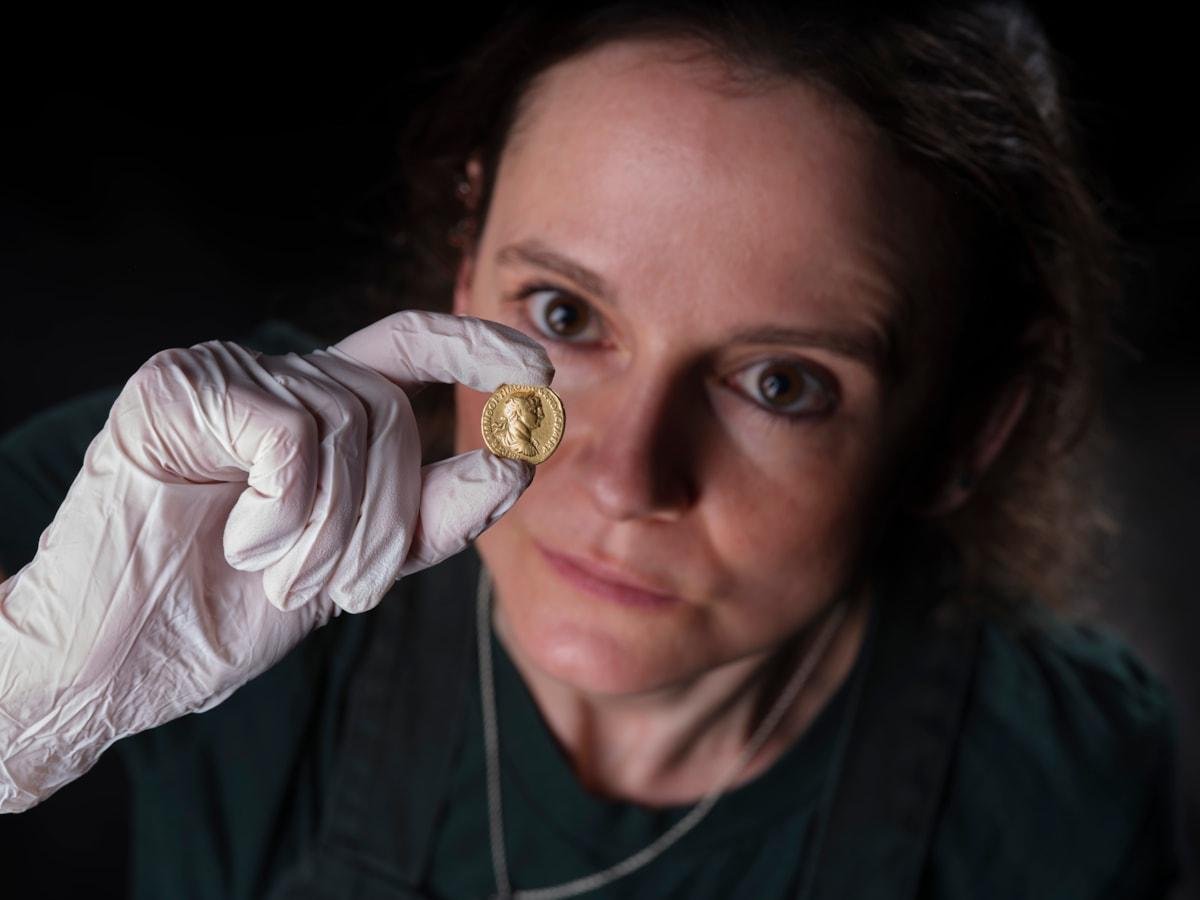A rare 2,000-year-old Roman gold coin is now on display at the Trimontium Museum in Melrose. The aureus, dating from 114-117 CE, was unearthed at Newstead in the Scottish Borders and is now on loan from National Museums Scotland. The exhibition “Trajan’s Aureus” opens on 3 April and runs until the end of the year.
 Gold Aureus of Trajan. Credit: National Museums Scotland
Gold Aureus of Trajan. Credit: National Museums Scotland
The coin was examined by Bethan Bryan, conservator at National Museums Scotland. The obverse of the aureus features a portrait of Emperor Trajan, while the reverse shows the Parthian king surrendering to a Roman ruler.
This “propaganda image” shows Trajan’s campaigns in the Parthian Empire, a powerful Iranian dynasty that ruled vast territories across the Middle East, Iran, and Central Asia. The Parthians were traditional rivals of the Roman Empire, with whom they had fought many wars, such as the Battle of Carrhae in 53 BCE, where they devastatingly defeated Crᴀssus’ Roman army.
Trajan’s war against the Parthians between 114 and 117 CE temporarily conquered important cities such as Ctesiphon and Seleucia, but these were subsequently retaken after his death.
 Conservator Bethan Bryan examines the gold Aureus of Trajan. Credit: National Museums Scotland
Conservator Bethan Bryan examines the gold Aureus of Trajan. Credit: National Museums Scotland
The exhibition at the Trimontium Museum is part of National Museums Scotland’s wider plan to distribute its collections and expertise across the country. More than 2,500 objects from the national collections are on loan to Scottish organizations, bringing history to local audiences.
Visitors to the Trimontium will now be able to see this extraordinary object, which provides a tangible link to Scotland’s Roman history and wider geopolitical conflicts in the ancient world.





